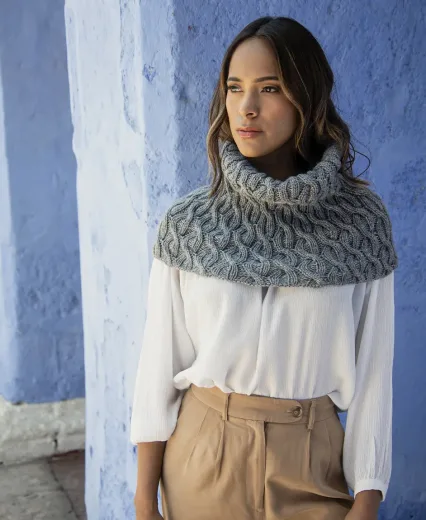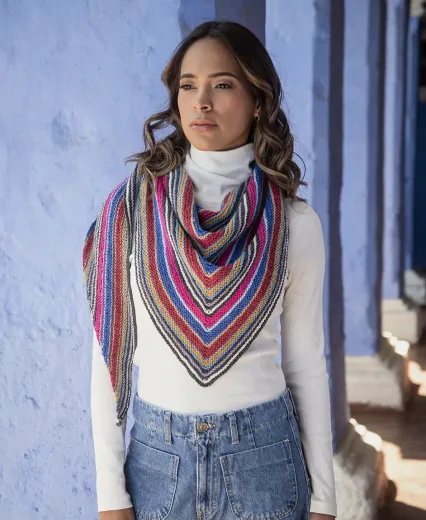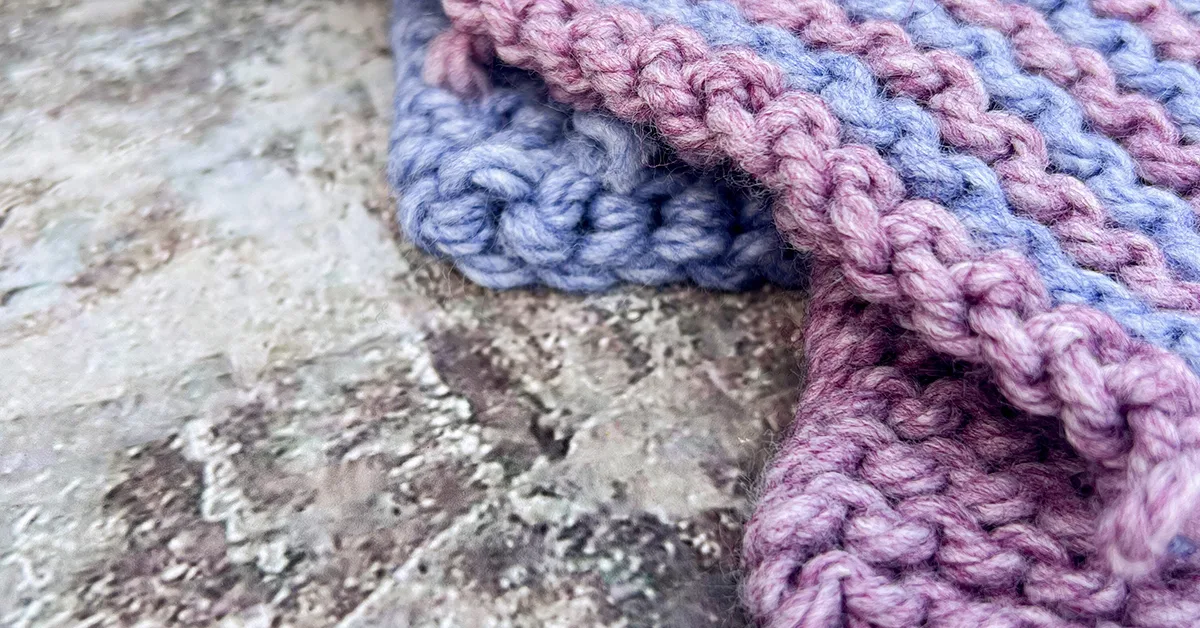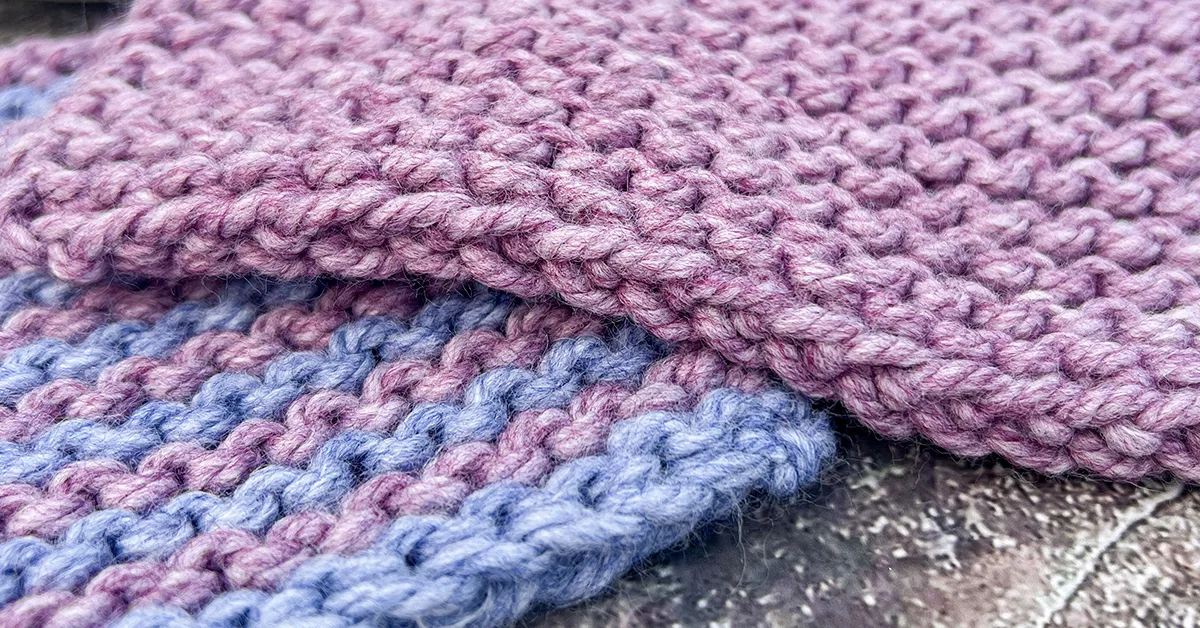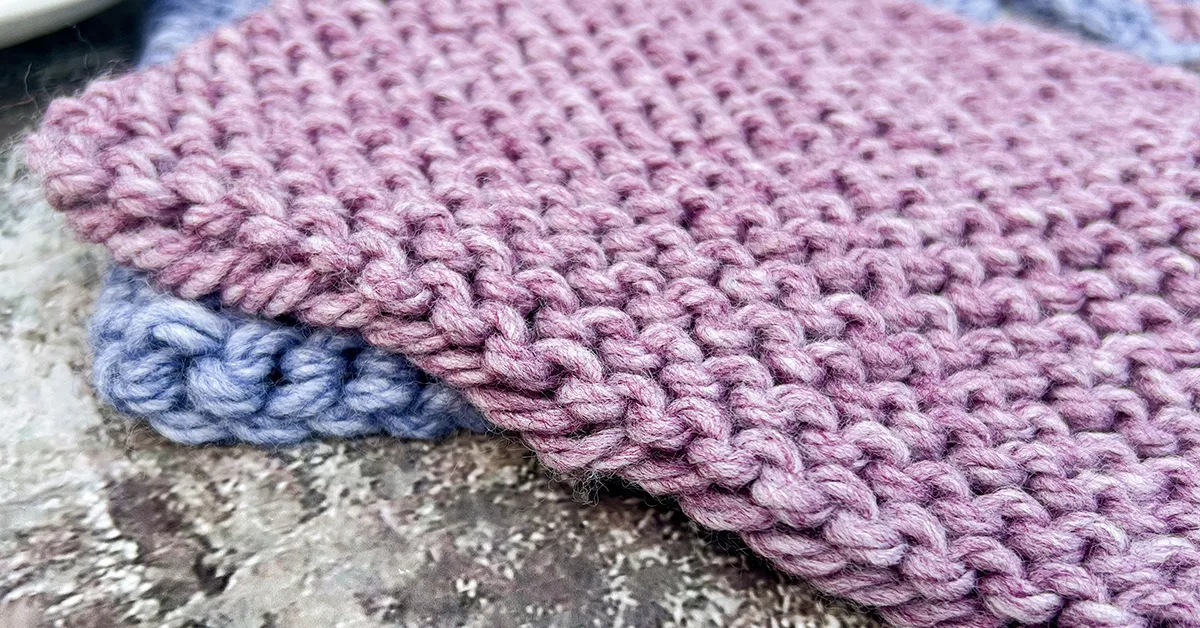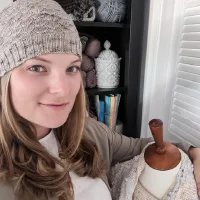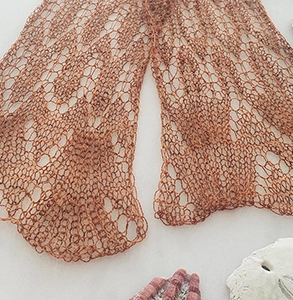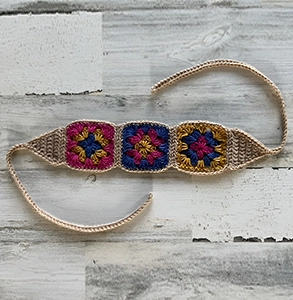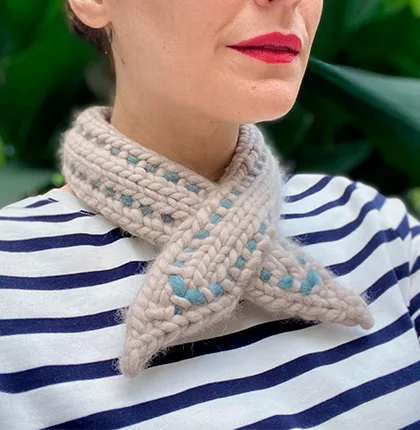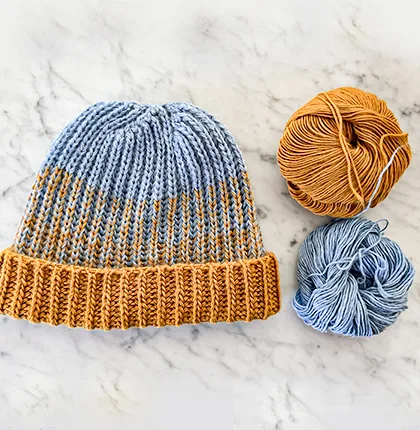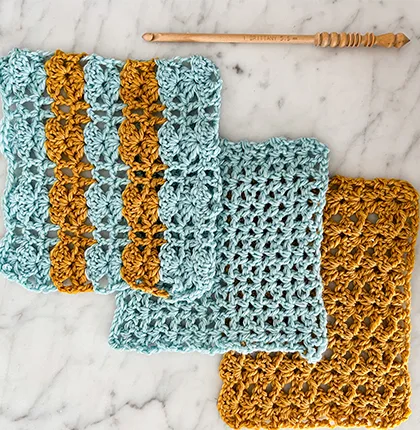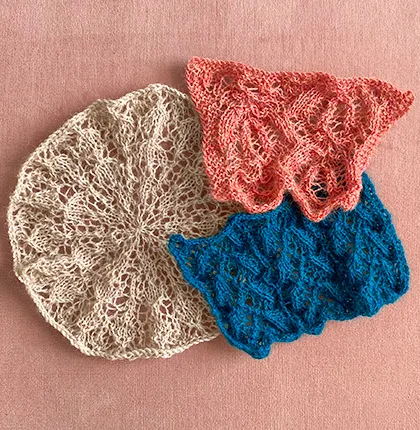When working on your knitting project, having the right cast-on and bind-off is crucial for making sure your item looks polished and, more importantly, functions as expected. That’s why, in today’s blog post, we’re covering three cast-ons paired with three bind-offs to help you make the perfect project—no matter your skill level.
What is Casting On and Binding Off?
In case you’re a very new knitter just getting started, let’s clear up some terminology before we dive into things today.
First, casting on is the process of putting loops onto one of your knitting needles. These loops will form the basis of your project as it grows. Because knitting is essentially a series of loops that can be easily unraveled, it’s really important to use specific techniques when casting on for a new project.
Binding off, then, is the opposite of casting on. When you bind off, you wrap the loops on your needle around each other one by one, or wrap some leftover yarn through those loops, in a way that will secure them and keep them from unraveling once you take them off the needles. If you don’t bind off properly, your project will fall apart when you try to use it.
Different cast-ons and bind-offs have different properties. Some create beautiful ridges while others mimic the look of slipped stitches. Some are very firm while others are slightly or very stretchy. Today, we’ll talk about a few different techniques to help you get the look and functionality you’re trying to achieve for your project.
The Yarn in This Post
You’ll see swatches and tutorials throughout this blog post. All of these swatches were knit using Yarnalia’s Fluffy yarn, a 30% wool, 70% acrylic blend with three plies and lots of bounce. It’s a great yarn for projects that are going to receive lots of wear, like jackets and blankets.
And because Fluffy is a bulky-weight yarn, it also works up pretty quickly. That makes it great for gift knitting.
Pair #1 – Perfect for Beginners
Pair #1 uses the knitted cast-on and the basic bind-off. These two techniques are the easiest for beginner knitters to learn because they are basically just knit stitches with a small twist. Let’s take a look.
The knitted cast-on, shown above, uses the same movements as if you were going to knit a row of stitches. The only difference is that, instead of leaving the new loop on your right needle and sliding the old stitch off of the left needle, you’re putting the new loop onto your left needle and adding a new stitch.
The knitted cast-on is great for most projects, but its main drawback is that it’s a pretty slow cast-on method. That doesn’t really matter when you’re making scarves that are 30 stitches wide, but it makes a real difference once you start making garments and have to cast on 200 or more stitches in a go.
The basic bind-off is also very similar to the process of just knitting a stitch. In this bind-off, you’ll knit two stitches, insert your left needle into the right-most stitch, lift that stitch, draw it to the left over the stitch next to it, and let it drop down over that stitch. You’ll repeat this process all the way across the bind-off edge until there’s just one stitch remaining, and then pull your working yarn through that stitch.
This bind-off is a very sturdy bind-off and one that is a great choice for newer knitters or knitters who need some stability along their bind-off edge (for example, if you’re knitting garment pieces that need to be seamed). It’s such a popular bind-off that many knitters use it exclusively. However, it can be a very tight bind-off, so it’s not a good choice for things like sock cuffs, hat brims, and sweater hems.
Pair #2 – Intermediate Techniques
For more intermediate knitters seeking to expand their repertoire, Pair #2 has some good options: the long-tail cast-on and the decrease bind-off (also known as binding off through the back loop).
With the long-tail cast-on, pictured above, you have one of the fastest cast-ons around. This is great for garment knitting and other projects where you need to cast on a very large number of stitches. Depending on how you work the cast-on, it can also be either a firm, rigid cast-on or a stretchier one. This gives you a lot of flexibility as a knitter.
One challenge of this cast-on, though, is that it’s easy to underestimate how much yarn you need for it. Knitters often find themselves halfway through casting on before realizing they won’t have enough yarn to finish. Always leave yourself more yarn to work with than you think you’ll need.
The decrease bind-off, shown above, is a moderately stretchy bind-off that’s great for things like sock cuffs where you need some movement in the bind-off but don’t want it too lose. When you work this bind-off, you knit two stitches, and then you knit those stitches together through the back loop. Then you knit a third stitch, and knit that together through the back loop with the stitch remaining on your right needle. You work this series of stitches all the way to the last loop on your needle, then draw your remaining yarn through that loop. It’s a really versatile bind-off that looks a lot like the basic bind-off but has much more stretch built into it.
Pair #3 – Options Using Extra Tools
Pair #3 combines the crocheted cast-on with Elizabeth Zimmerman’s sewn bind-off. Both require the use of a tool beyond your knitting needles and both are designed to give you a special finish. Let’s take a look.
The crocheted cast-on is designed to give you an edge that looks like many bind-off edges and slipped stitch edges. You can see that edge in the photo above. This is especially useful for projects like mitered squares, where you want all four sides of your project to match. If you need the beginning and end of your project to be mirror images, the crocheted cast-on is a really helpful technique.
Elizabeth Zimmerman’s sewn bind-off is meant to mimic the edge of the long-tail cast-on. It is kind of a like a simplified tubular bind-off, and the edge has a lovely ridge on it, as you can see in the photo above. It’s also one of the stretchier bind-off techniques, so you might find it useful if you are knitting a hat from the crown downward or a sock from the toe upward and need a bind-off that isn’t too rigid.
With a range of cast-ons and bind-offs in your toolkit, you’ll be better equipped to make knits that look and function exactly how you want them to. Whether you need flexibility or rigidity, a decorative edge or a pretty ridge, these techniques will help you create finished objects with just a little bit more polish.

